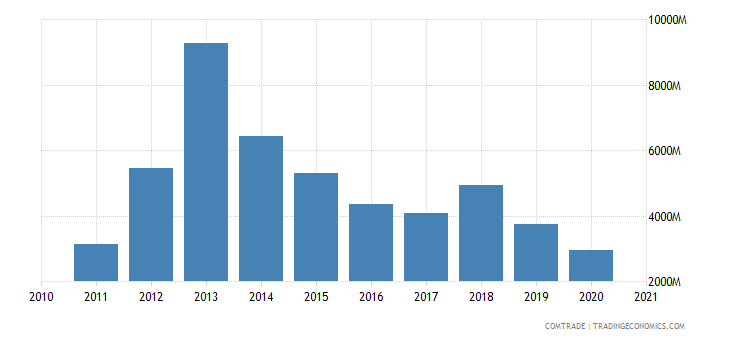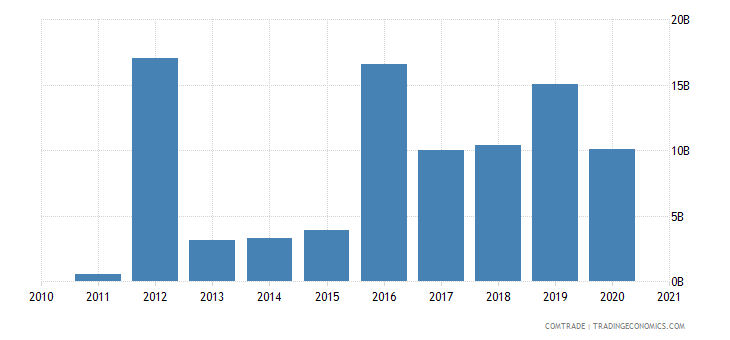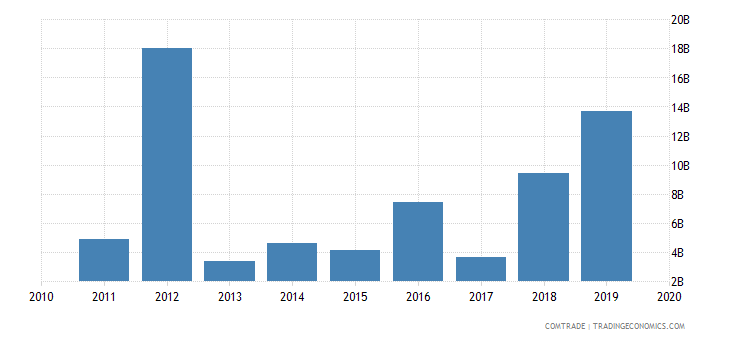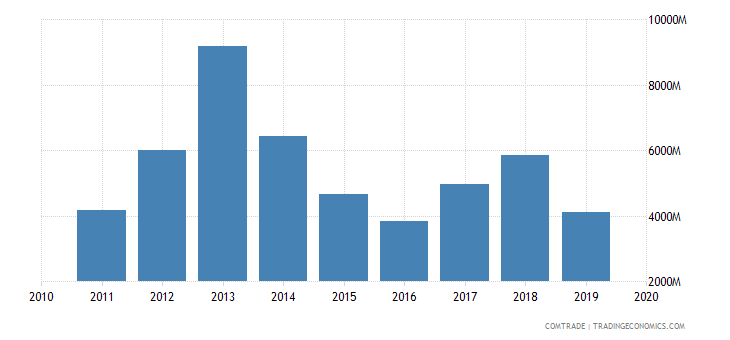Introduction
It is hard to overestimate the significance and efficiency of international trade agreements. Understanding how they work and what benefits provide is essential in determining the feasibility of international trade. If made reasonably, trade agreements may allow different countries and their companies to access those markets and industries that were not available before. What is more, such a step can significantly increase nations’ wealth and success, as well as contribute to their mutual relationships. The purpose of this paper is to explore the nature of the free trade agreement between the United Arab Emirates and Switzerland.
Summary of Trade Statistics (Pre-Implementation)
To begin with, it is essential to mention that there is a long history of beneficial business relationships starting from 1976 when a small trade office was opened by Switzerland in Abu Dhabi. Both Switzerland and UAE are each other’s most important trading partners that strengthen and develop their economic relations.
Before 2014, Switzerland’s exports to the United Arab Emirates were the largest in 2013 (approximately $9.1 billion) (“Switzerland exports to the United Arab Emirates,” 2021). In 2011 and 2012, these numbers were lower (Figure 1). As for its imports from the UAE, they were insignificantly less in 2013 compared to 2014 (“Switzerland imports from the United Arab Emirates,” 2021). However, 2012 was marked with extremely high numbers (about $17 billion as opposed to $3.5 billion in 2014) (Figure 2). At the same time, United Arab Emirates exports to Switzerland were much more successful in 2012 compared to the following two years (“United Arab Emirates exports to Switzerland,” 2021). Even in 2011, there was more value than in 2013 and 2014 (Figure 3). Finally, the UAE imports from Switzerland were the largest in 2013 (approximately $9.3 billion) (“United Arab Emirates imports from Switzerland,” 2021).


Trade Agreement
The free trade agreement between Switzerland and the United Arab Emirates was signed in 2009 together with the Gulf Cooperation Council. Though it entered into force on July 1, 2014, it was completely implemented only a year later, on July 1, 2015 (Federal Department of Foreign Affairs, 2019). The main purpose of this trade agreement was to strengthen the existing relationship between the UAE and Switzerland and try to increase imports and exports. According to Rahman (2015), it was implemented in the interest of both countries to allow their “governments to grant duty free access to goods” (para. 4). Experts believed that having this agreement would provide both countries with an opportunity for enhanced investment growth and a better framework for the business environment (Rahman, 2015).
Some of the critical points of the free trade agreement included the following. First, industrial products gained duty-free access to the EFTA States markets. Then, most customs duties for goods imported into the Gulf Cooperation Council were eliminated (Sveinbjornsson, n.d.). Finally, “certain products become duty-free after a transitional period of 5 years, while some others remain excluded from tariff dismantling or excluded from the scope of application” (Sveinbjornsson, n.d., para. 2). Bilateral agricultural agreements also covered basic processed agricultural products.
Affected Markets
Several markets were expected to be affected the most. To begin with, a number of UAE companies tried to invest in Switzerland in the retail, finance, and tourism sectors (Rahman, 2015). Switzerland was aimed at exporting from its pharmaceutical market (Naqvi, 2018). Overall, no industries were expected to be impacted negatively. Jewelry and precious metals and stones are traded bilaterally and rather successfully (Naqvi, 2018). What is more, Swiss watches account for a fifth of the country’s exports to the emirates (Naqvi, 2018). The perfume and chocolate industries are also positively affected by the agreement.
The Politics
For Switzerland, there was a specific political reason that led to the ratification of the trade agreement. According to Rahman (2015), the country was concerned with the current economic climate in Europe. Since sixty percent of Switzerland’s trade was with the European Union, but the country wanted to gain more independence, it decided to find other places for trade increase. The UAE was a unique region that was growing faster and more successfully than others, and the relationships between these two countries were rather strong and effective. As for the UAE, its government was interested in increasing the tourism sector. Considering that their past economic relations were already beneficial, and the United Arab Emirates perceived Switzerland as their main trade partner, the ratification of the trade agreement was an evident upcoming decision.
Summary of Trade Statistics (Post-Implementation)
To begin with, Switzerland’s exports to the United Arab Emirates were decreasing year by year, from about $6.3 billion in 2014 to $3.9 billion in 2019 (Figure 1). At the same time, its imports from the UAE were growing significantly, starting from approximately $4.7 billion in 2015 to $10 billion in 2020 (Figure 2). United Arab Emirates exports to Switzerland were growing unstably and slowly, but if one compares, 2015 was marked with $4.1 billion, and in 2019, the numbers were about $13.9 billion (Figure 3). Finally, its imports from Switzerland became lower, and only in 2018 it almost achieved the numbers from 2014, $5.9 billion and about $6.2 billion respectively (Figure 4). In 2018, the value of pearls and precious stones and metals exports was $3.36 billion, while in 2019, it decreased to $1.83 billion (“Switzerland exports to United Arab Emirates,” 2021). As for pharmaceutical products, their exports to the UAE were evaluated as $249.70 million in 2019 and $272.82 million in 2018 (“Switzerland imports from United Arab Emirates,” 2021).


Conclusion
To draw a conclusion, one may say that the overall benefit for both countries was not very significant. Though this free trade agreement helped Switzerland and the UAE to have relatively high export and import values, the agreement was not as effective as the experts expected. However, it may be suggested that not making this decision would have led to even more damaging results as Switzerland supposed.
References
Federal Department of Foreign Affairs. (2019). Bilateral relations Switzerland – United Arab Emirates. FDFA. Web.
Naqvi, R. (2018). Switzerland and the UAE: From strength to strength. Gulf News. Web.
Rahman, F. (2015). Free trade agreement between UAE and Switzerland this year. Gulf News. Web.
Sveinbjornsson, D. (n.d.). Gulf Cooperation Council (GCC). EFTA. Web.
Switzerland exports to the United Arab Emirates. (2021). Trading Economics. Web.
Switzerland imports from United Arab Emirates. (2021). Trading Economics. Web.
United Arab Emirates exports to Switzerland. (2021). Trading Economics. Web.
United Arab Emirates imports from Switzerland. (2021). Trading Economics. Web.